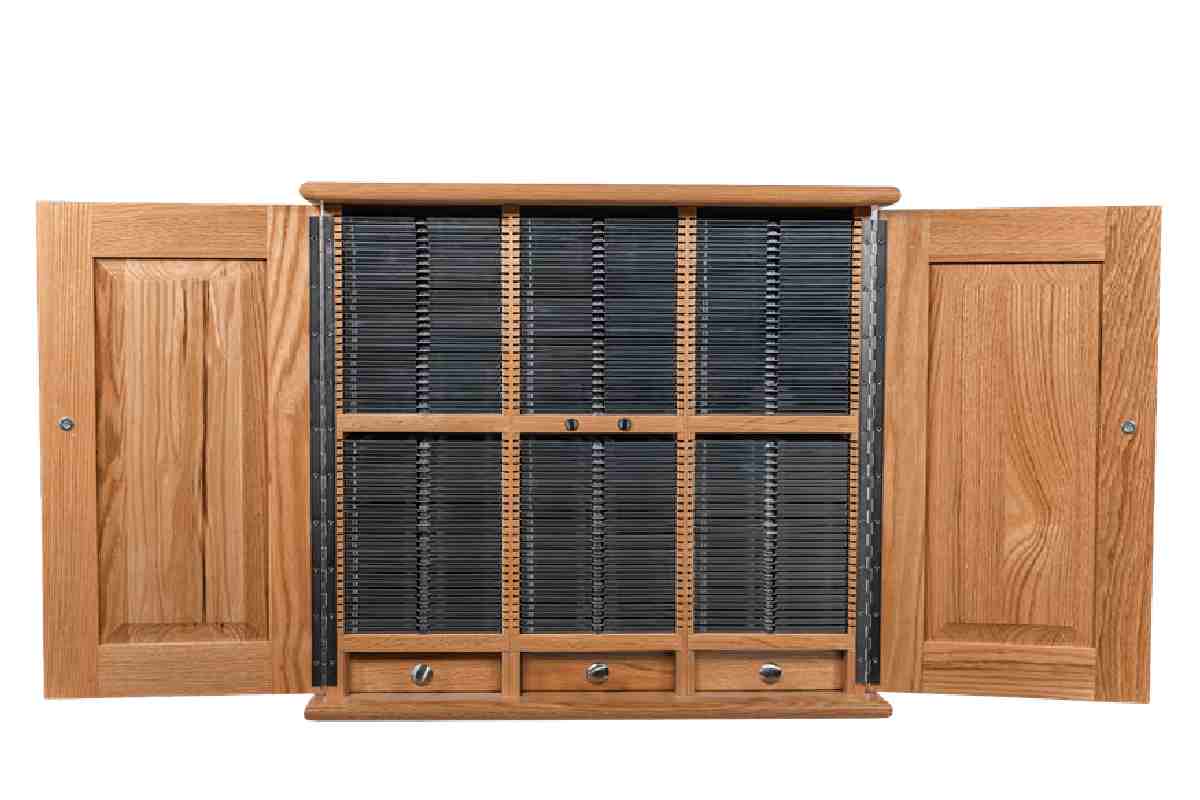
Microscope : The janitor thought it was an empty box.
Tucked under a counter, slightly warped, unmarked—just a few trays of “old lab stuff.”
He tossed it. And with it, three years of histological data, a pending paper, and one very distraught postdoc who suddenly had to re-stain 2,000 slides.
No backup. No protocol. No chance.
This is why microscope slide archiving isn’t a side task—it’s part of the science.
Slides Aren’t Just Glass. They’re Your Evidence.
Every slide tells a story. A tumor diagnosis. A failed drug trial. A new species of lichen from a remote Andes cliff.
And you’d be shocked how often they’re stored like junk mail.
Plastic bins. Shoeboxes. Makeshift drawers in cabinets never meant to hold delicate, irreplaceable scientific data.
You wouldn’t store liquid nitrogen in a Styrofoam cooler. So why treat your slides like afterthoughts?
Microscope Slide Storage: Not All Cabinets Are Created Equal
If you’re in research, you need real storage.
Built for labs. Built for longevity. Built for science.
That means:
- Steel construction that laughs in the face of humidity.
- Smooth-glide drawers that don’t jolt, jam, or chip.
- Stackable, scalable systems that grow with your lab’s ambitions.
- Labeling and indexing features that actually help you find things.
Humidity Is a Sneaky Saboteur
You don’t see the damage right away.
But give it time—and slides stored in the wrong cabinet will fog, warp, grow mold, or start flaking at the edges like a pastry left in the sun. And if that sample was the only viable tissue from a rare study subject?
That’s not a loss. That’s a catastrophe.
Cabinets with proper seals, airflow control, and powder-coated finishes help keep environmental enemies at bay.
“Where’s That Slide From 2016?” Shouldn’t Be a Horror Story
Retrieval matters.
Whether you’re facing an audit, writing a follow-up paper, or replicating results five years later, the last thing you want is to be elbow-deep in a mislabeled drawer muttering “I swear it was in here.”
Great archiving = fast access. That means:
- Clearly indexed trays
- Drawer labels that make sense
- Logical groupings by study, date, or sample type
In short, a microscope slide storage system that respects your time—and your sanity.
Compliance Isn’t Just About Rules. It’s About Readiness.
You’ve seen it happen.
The inspector asks for ten random archived samples. You know they’re “somewhere” in the back cabinet. But that cabinet? The one with the squeaky drawers and faded masking tape labels?
Yeah. That’s not going to impress the FDA. Or CAP. Or your grant officer.
A compliant slide archiving system:
- Secures your samples
- Tracks retention timelines
- Makes audits… less painful
One Word: Scalability
Today you’ve got 5,000 slides. Tomorrow? Maybe 50,000. Especially if your institution handles:
- Pathology archives
- Cross-departmental storage
- Longitudinal studies spanning years (or decades)
So the best microscope slide storage setup doesn’t just handle today’s volume. It’s ready to grow. Modular design. Stackable units. Configurations that flex with your needs.
Because a system that runs out of space is one step away from chaos.
The Hybrid Future: Physical Slides, Digital Indexing
Let’s be real—paper logs don’t cut it anymore.
If your archived slides aren’t connected to some sort of digital tracking system (even a humble spreadsheet), you’re setting yourself up for confusion.
Some labs are already integrating:
- QR-coded trays
- Slide-level metadata linked to project files
- Database searchability
It’s not overkill. It’s the minimum standard for modern archiving. Pair a smart indexing system with a rock-solid physical cabinet, and your archive becomes bulletproof.
Best Practices for the Long Haul
Slide archiving is like lab safety—everyone agrees it’s important, but it only works if it’s actively maintained. Make it a system, not a stack.
- Set a standardized labeling protocol across all departments.
- Perform quarterly audits of sample location and condition.
- Assign someone the role of archive coordinator (not the intern).
- Have a clear retention policy—some slides stay five years, others forever.
- And please, no storing slides on top of radiators, fridges, or windowsills.
Final Word: Respect the Work—Archive Like It Matters
Because it does.
The integrity of your microscope slide archive reflects the integrity of your science. It’s not just about avoiding damage. It’s about preserving discovery.
So invest in real microscope slide storage. Not an office cabinet from a catalog. Not that wobbly unit you inherited from the 90s.
Get something built for research. Built for labs. Built to last.
Also Read: Nothing2HideNet Gaming: The Future of Online Play and Innovation